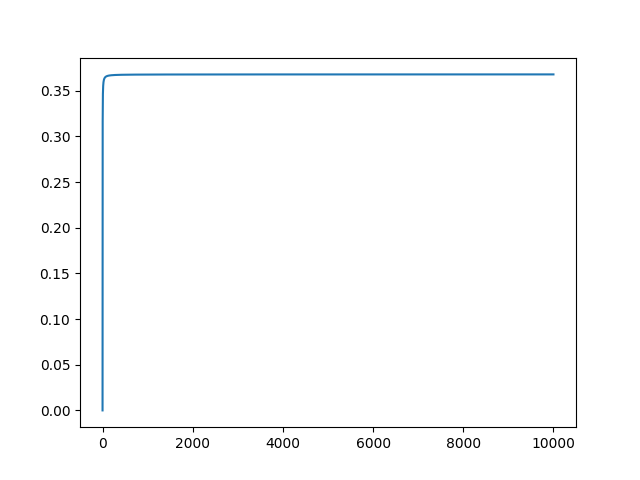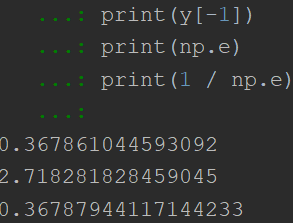自助法随机采样过程中,对n个样本进行n次有放回的随机采样,当n趋向于无穷大时,最终有多少数据从未被选择过?
1,推导
一个样本在一次抽样过程中未被抽中的概率为
\[(1- \frac{1}{n}) \tag{1}
\]
n次抽样均为被抽中的概率为
\[(1-\frac{1}{n})^n \tag{2}
\]
当n趋向于无穷大时的概率为
\[\lim_{n \to \infty} (1-\frac{1}{n})^n \tag{3}
\]
已知
\[\lim_{n \to \infty} (1+\frac{1}{n})^n=e \tag{4}
\]
由(3)、(4)可得:
\[\lim_{n \to \infty}(1-\frac{1}{n})^n = \lim_{n\to\infty}(\frac{1}{(1+\frac{1}{n-1})^n})=\frac{1}{\lim_{n \to \infty(1+\frac{1}{n-1})^{n-1}}}\cdot\frac{1}{\lim_{n\to\infty}(1+\frac{1}{n-1})}=\frac{1}{e}\approx0.368 \tag{5}
\]
因此,当样本很大时,有大约36.8%的样本从未被选择过
2,代码验证(极限近似求值)
import numpy as np
from matplotlib import pyplot as plt
x = range(1, 10000)
y = [pow((i-1)/i, i) for i in x]
plt.plot(x, y)
plt.show()
print(y[-1])
print(np.e)
print(1 / np.e)


3,代码验证(随机采样)
import numpy as np
n = 100000
choosen = set()
for i in range(n):
choosen.add(np.random.randint(1, n+1, 1)[0])
print(choosen)
print(len([i for i in range(1, n+1) if i not in choosen]) / n)

行动是治愈恐惧的良药,而犹豫拖延将不断滋养恐惧。



 浙公网安备 33010602011771号
浙公网安备 33010602011771号